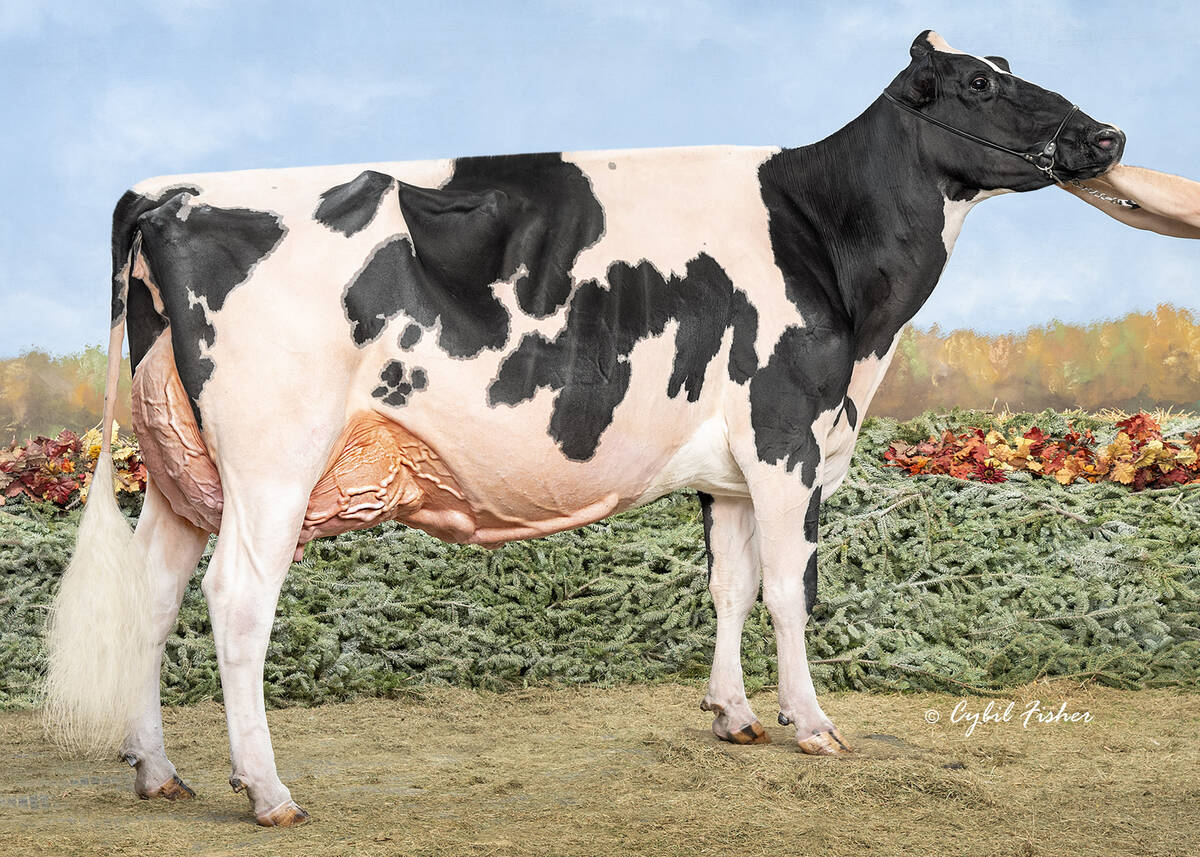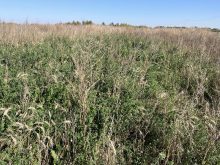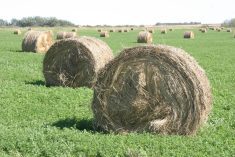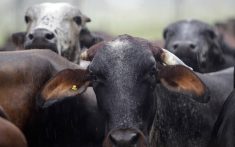RED DEER, Alta. – When Russell Stankievech picks up a handful of soil on his farm, it feels mellow and full of organic material.
Instead of hard, lumpy gumbo, the soil crumbles in his hands. He said he believes that added tilth comes from growing peas.
“You think you’re farming a different farm after you grow peas,” said Stankievech, who farms 6,720 acres with his family at Three Hills, Alta. He was a guest speaker at the Alberta Conservation Tillage Society meeting in Red Deer, and is president of his local conservation group, Dust Ain’t Us Conservation 2000 Club.
Read Also

Saskatchewan dairy farm breeds international champion
A Saskatchewan bred cow made history at the 2025 World Dairy Expo in Madison, Wisconsin, when she was named grand champion in the five-year-old Holstein class.
It took some strong arguments 20 years ago for Stankievech to convince his family to try direct seeding. Over time, the new method gained acceptance.
The family started growing peas in 1993 and after two years feel the benefits of the pulses outweigh the liabilities.
On their large operation, harvest is a 24-hour job using four combines and they’ve had to learn to take their time moving through the fields because peas can plug machinery.
Stankievech said peas fit in well with the family’s overall approach to direct seeding and minimum tillage.
Three Hills land varies from heavy, black clay called Ghost Pine gumbo to a lighter, dark-brown soil type. The gumbo holds moisture well, but can gum up machinery. The brown soil is subject to drying, cracking and subsequently poor germination.
Last year, the Stankieveches direct seeded 4,120 acres into stubble standing 20-25 centimetres tall. Granular herbicide is applied in spring and fall. The family uses a single 14-metre (47-foot) Flexicoil 800 cultivator and 2320 airseeder, as well as packers.
In 1994, they seeded 1,500 acres of peas. About one third was direct seeded into standing stubble. Those fields showed the best results because there was additional moisture at seeding, said Stankievech.
They seed peas about five centimetres deep. The peas take longer to emerge, but Stankievech said the plants do better because of it. Frost isn’t a big worry because he’s seen volunteer peas survive minus five Celsius days.
The peas must be inoculated for disease and Stankievech recommends fertilizer to boost yields. Last year they got 66 bushels of peas to the acre to which he credits direct seeding and good growing conditions.
Wheat, barley, canola and peas are part of their rotation plan. On the Stankievech farm they try to avoid growing canola on pea stubble because of the risk of sclerotinia.
They spray two or three times a year for weed control and if they have an open fall, go over fields with Roundup to burn off surviving weeds.















